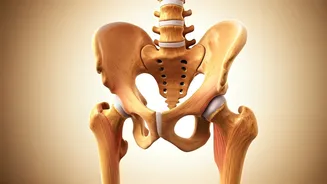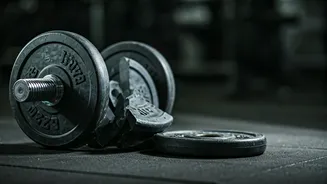Kettlebell Workout Basics
Kettlebells, spherical weights with a handle, have become a staple in home gyms, offering a comprehensive workout. Their unique design shifts the center
of mass, requiring more muscle engagement compared to dumbbells. This forces your body to work harder, activating various muscle groups simultaneously, making them ideal for full-body exercises. From swings that engage your glutes and core to presses that target shoulders and triceps, kettlebells provide a versatile platform. Consider the weight that's right for you. Start light and gradually increase resistance. The key is to master proper form, ensuring safety and maximizing effectiveness. Remember to prioritize controlled movements over speed to prevent injury and reap the most benefit from your workouts. The integration of kettlebells into a fitness regime is about efficiency, building strength, and boosting overall fitness.
Selecting Your Kettlebell
Choosing the right kettlebell can significantly impact your workout experience. Weight is a primary consideration, and beginners should start with a lighter weight, like 5–10 kilograms (11–22 pounds), to focus on proper technique. As strength increases, gradually increase the weight. Consider the material, as cast iron options are common for their durability, but may also come with a higher cost. Rubber-coated kettlebells provide an added layer of protection for both the kettlebell and your floors. Examine the handle, ensuring a comfortable grip that allows for a secure hold during dynamic exercises. Also, research the features, like the shape of the handle, as some may prefer a thicker handle for a better grip. The most suitable kettlebell choice depends on fitness level, the types of exercises planned, and personal preferences, so research is important before making a purchase.
Swings: Core Exercise
The kettlebell swing is a fundamental exercise that engages the entire body. To perform a swing correctly, stand with your feet shoulder-width apart and the kettlebell in front of you. Bend your knees slightly, keeping your back straight, and grab the handle with both hands. Initiate the movement by hiking the kettlebell back between your legs, like you're hiking a football. Then, powerfully drive your hips forward, using the momentum to swing the kettlebell up to chest height. It is important to keep your core engaged throughout the movement to protect your spine. Control the descent of the kettlebell back down between your legs and repeat. The swing develops explosive power and cardiovascular fitness and works your glutes, hamstrings, and core. Proper technique is important, as bad form can lead to injuries, so you can start with light weights. As you get more experienced, you can slowly increase the weight.
Cleans: Full-body Focus
The kettlebell clean is a dynamic exercise that builds strength and power. Begin with the kettlebell on the floor. Stand with your feet shoulder-width apart, knees bent, and back straight. Grasp the handle with one hand. In a single, fluid motion, explosively hinge at the hips, pull the kettlebell up, and 'clean' it to the racked position (resting on your forearm with your elbow tucked in). The movement should be fast and controlled, with the core engaged to maintain stability. The clean works a wide range of muscles, including your shoulders, back, core, and legs. Practice with a lighter weight to master the technique, focusing on smooth transitions and controlled movements. You should maintain a strong grip throughout the exercise, especially during the explosive phase. Controlled breathing aids the execution of the clean and minimizes the risk of injury. The clean adds a powerful component to your workout.
Turkish Get-Ups
The Turkish Get-Up is a full-body exercise that enhances strength, coordination, and stability. Begin lying on your back with the kettlebell held overhead in one hand. Maintain a straight arm and firm grip on the kettlebell throughout the exercise. Roll onto your side and then into a seated position. Using your opposite hand, support yourself to come to a high kneeling position. Then, stand up, keeping your arm straight and the kettlebell overhead. Reverse the movements to return to the starting position on the floor. It is important to perform the Get-Up slowly and deliberately, focusing on controlled movements and maintaining balance. The Turkish Get-Up challenges your core, shoulders, and legs. It improves balance and coordination, providing a complete workout. The exercise also helps to identify and address any strength imbalances.
Kettlebell Workout Integration
Integrating kettlebells into your fitness routine can be done in several ways. You can use kettlebells as the sole source of exercise or integrate them into your existing regime. If you're building a routine with just kettlebells, start with a warm-up, then perform a set of swings, cleans, presses, and squats. Choose a weight that challenges you but still allows you to maintain good form. Aim for multiple sets and reps of each exercise, with rest periods in between. For those who already have a routine, include kettlebell exercises. Begin with a few exercises to avoid muscle soreness, and slowly increase the intensity. Be aware of your limits and ensure you give your body time to recover. Kettlebell exercises can be incorporated in different ways, like circuit training, which builds both strength and endurance. With dedication, kettlebells can be a great way to boost fitness.















